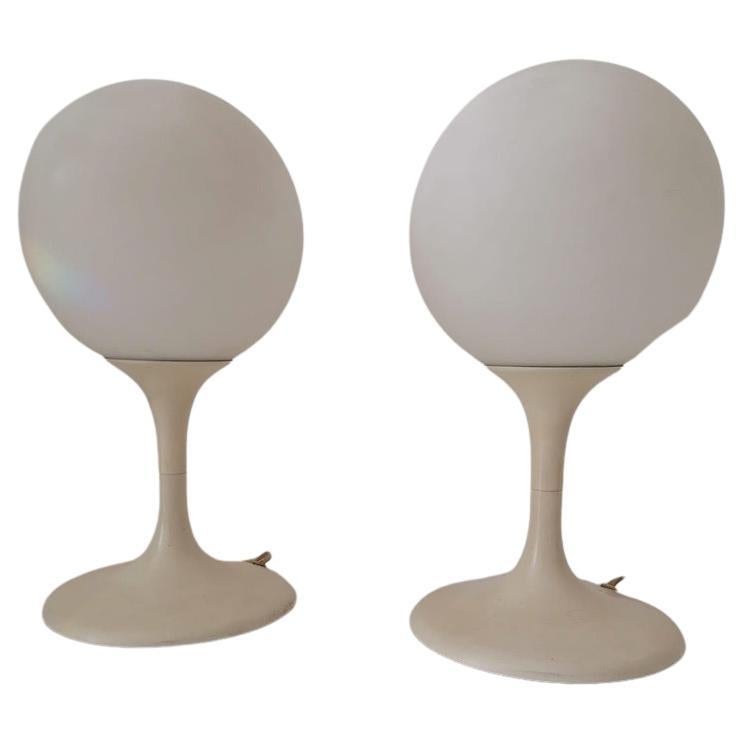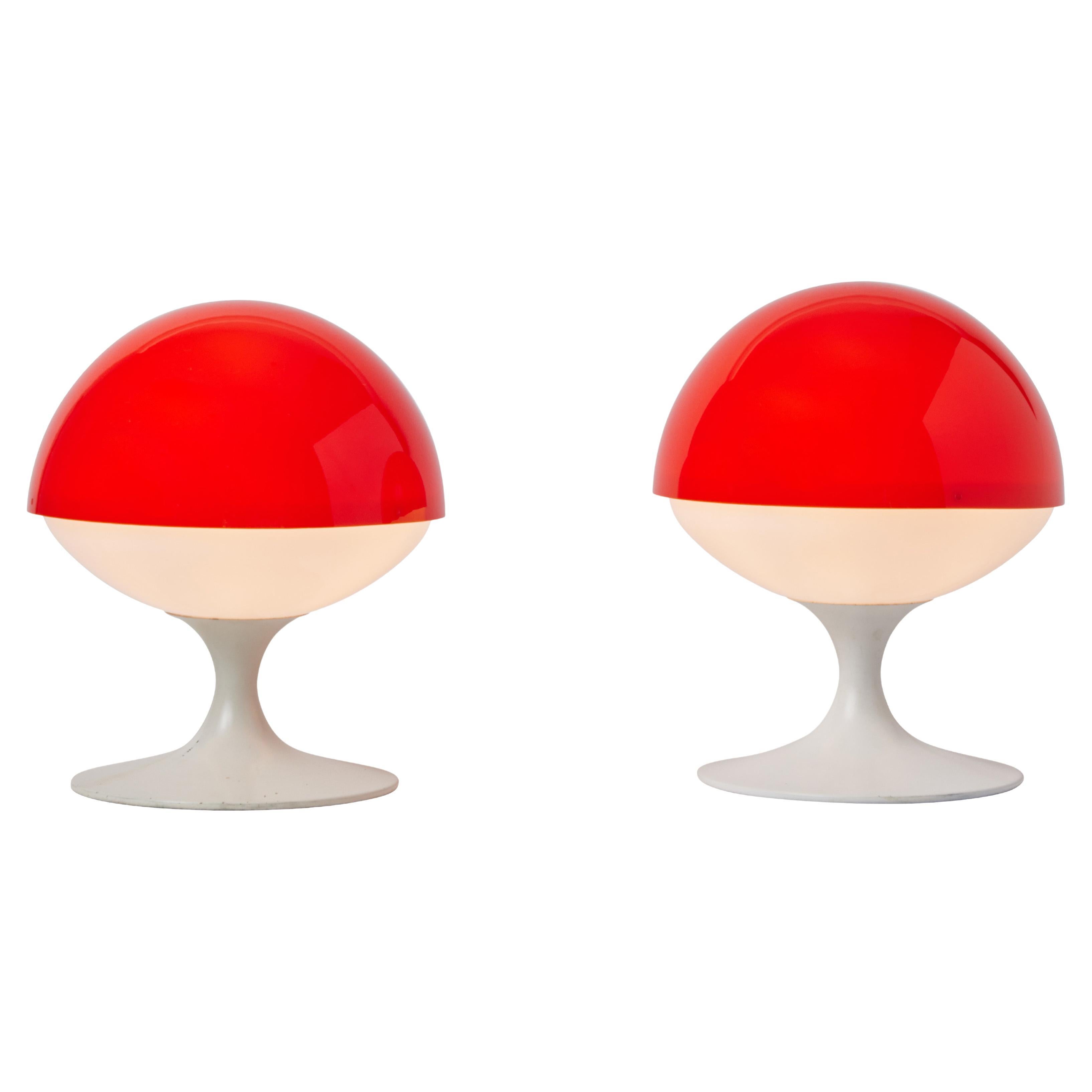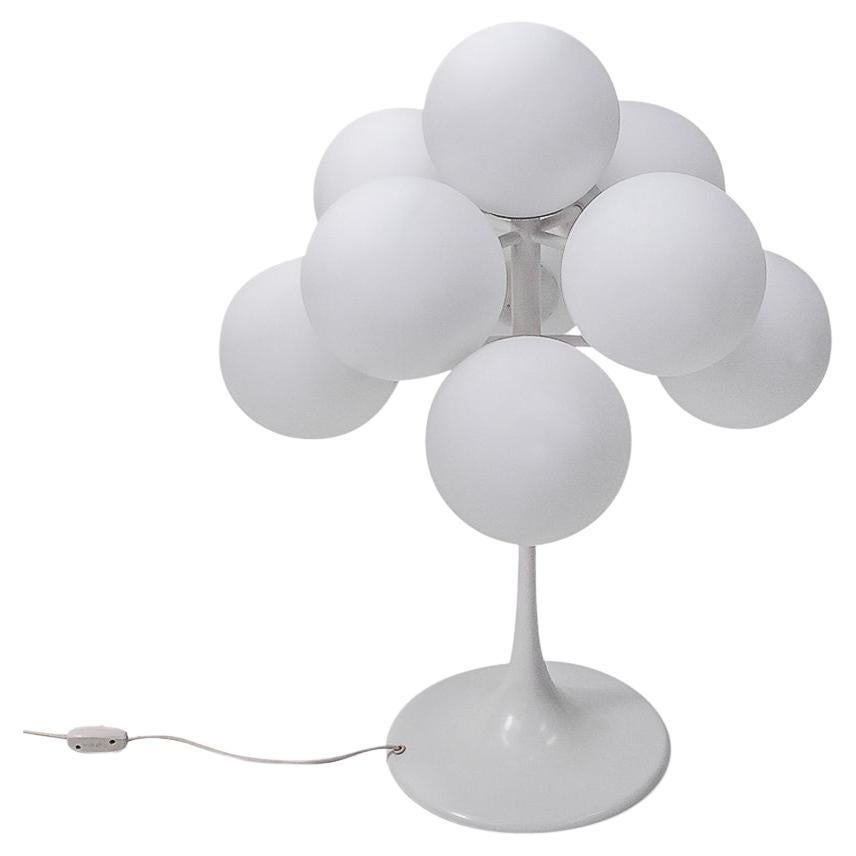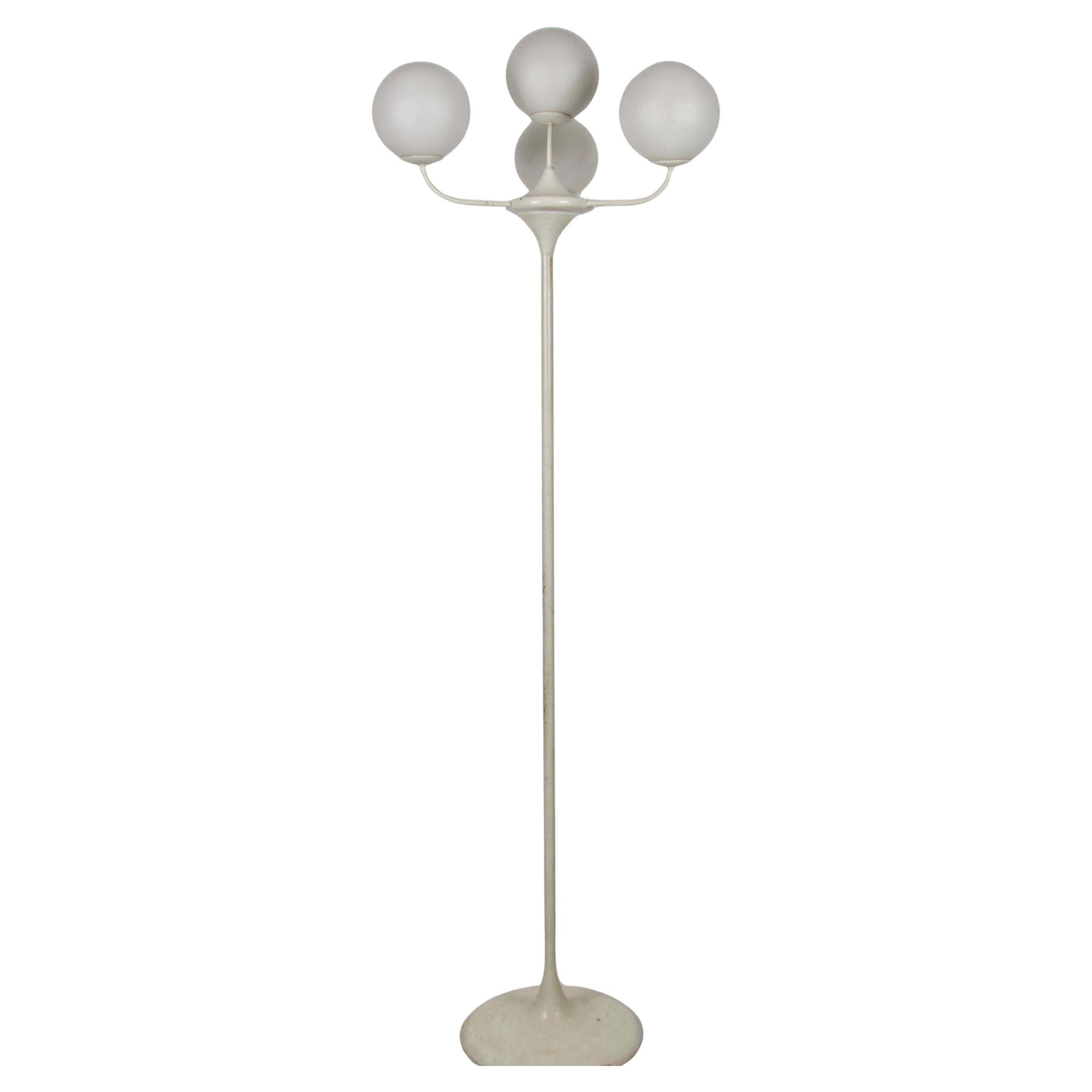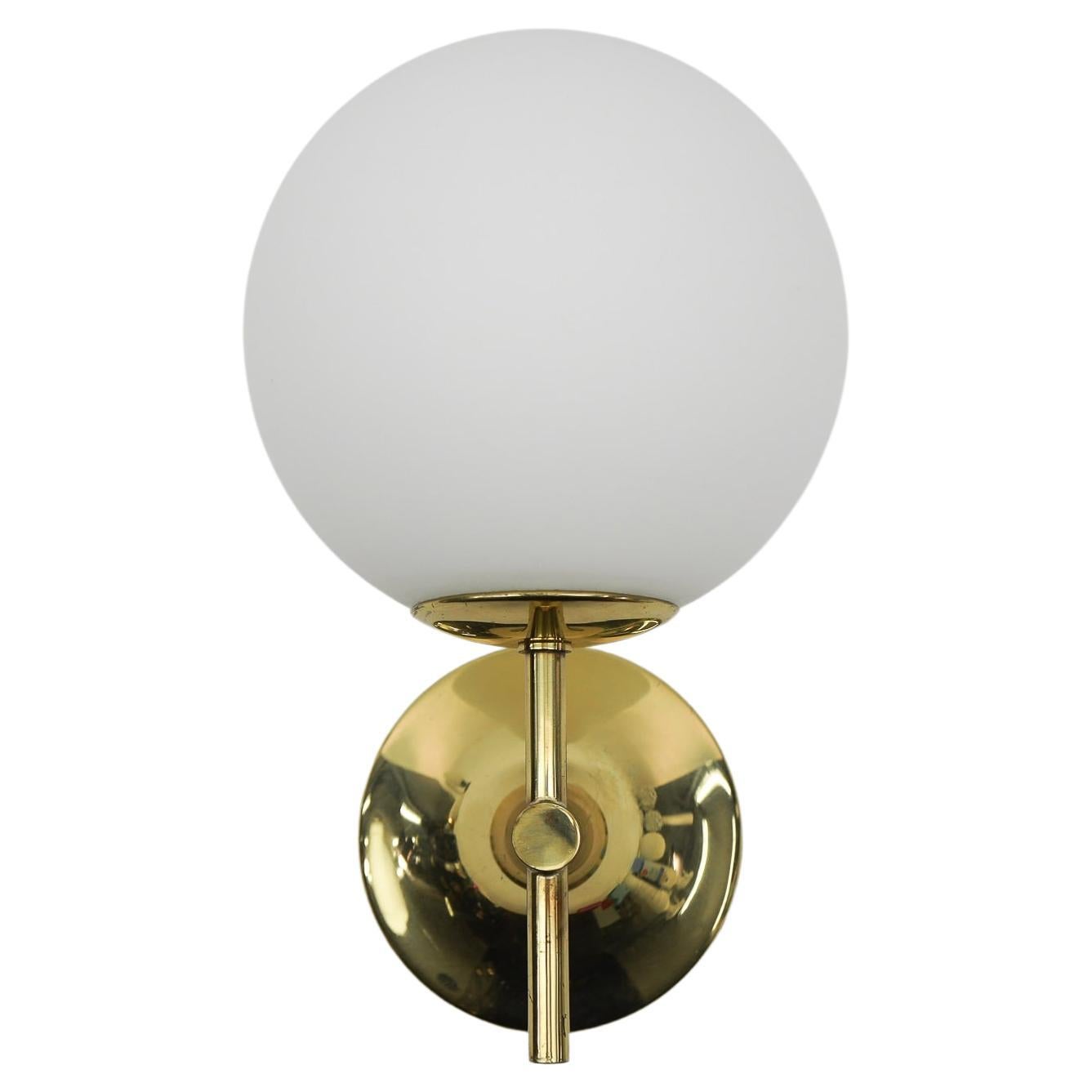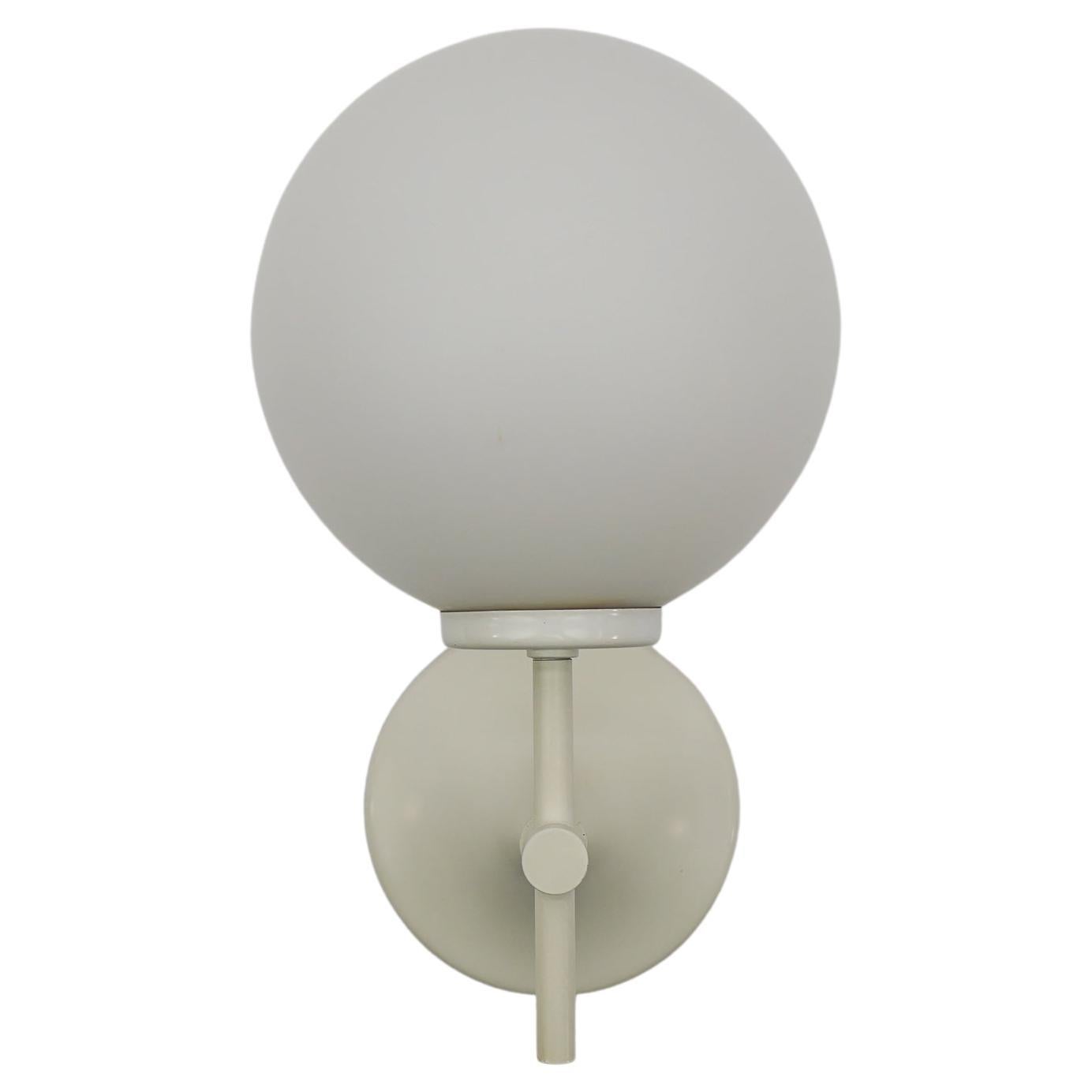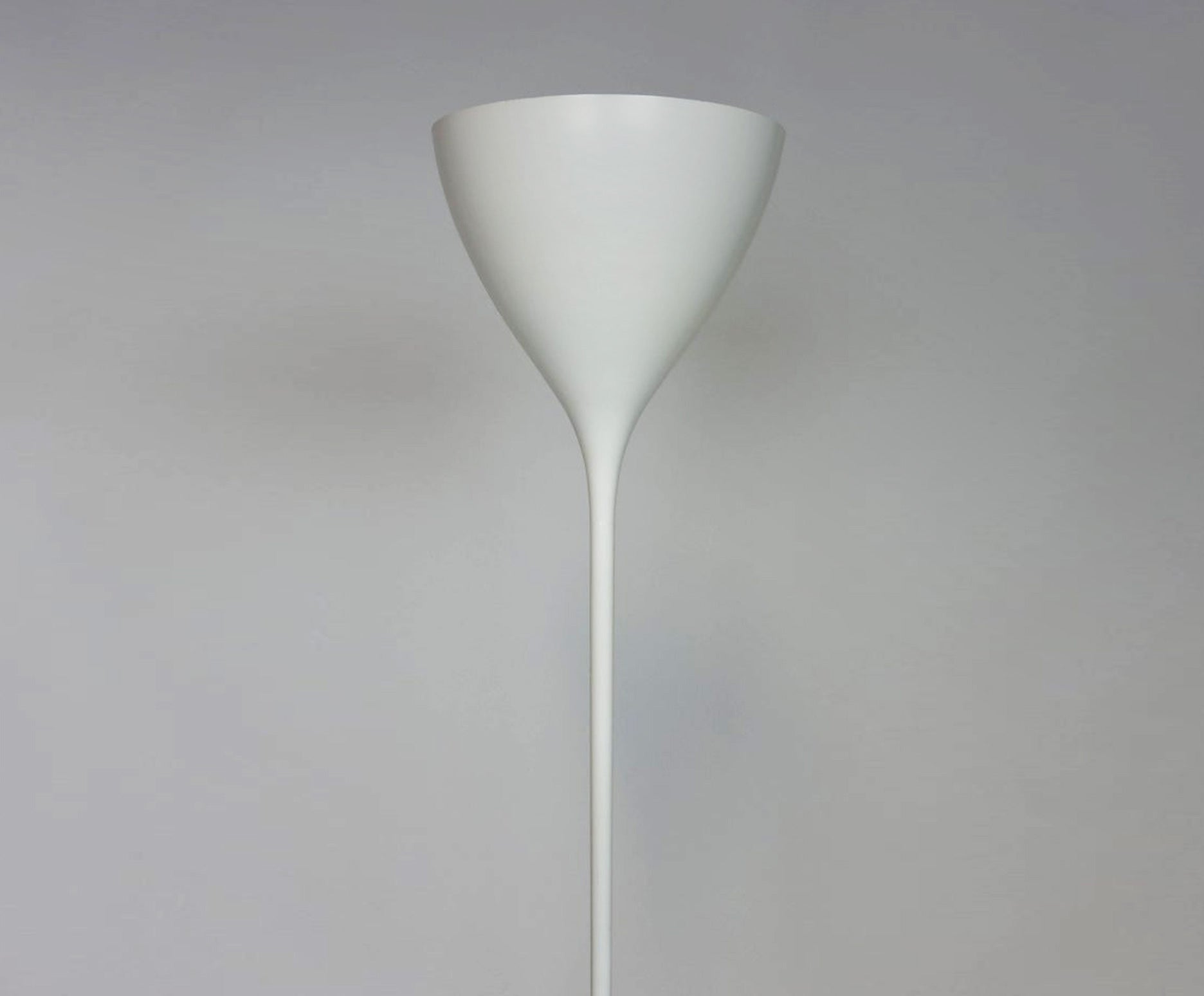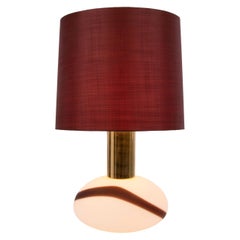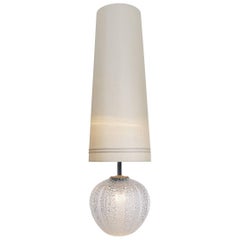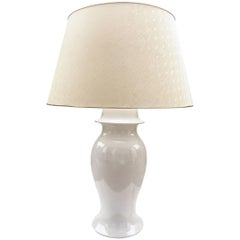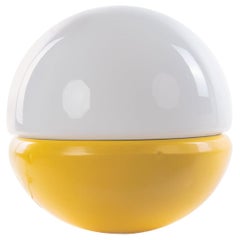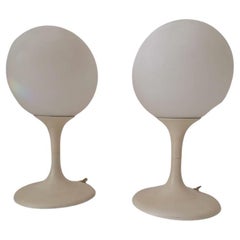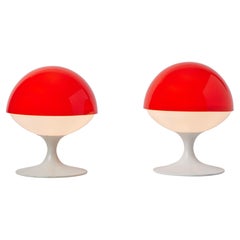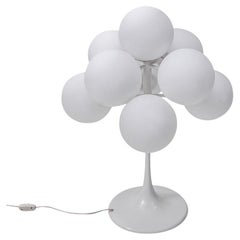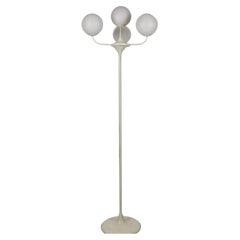Max Bill Tulip Floor Lamp Globe Glass & Aluminium by Temde, Switzerland, 1960s
About the Item
- Creator:Max Bill (Designer),Temde Leuchten (Manufacturer)
- Design:
- Dimensions:Height: 13.39 in (34 cm)Diameter: 15.75 in (40 cm)
- Power Source:Plug-in
- Voltage:220-240v
- Style:Mid-Century Modern (Of the Period)
- Materials and Techniques:
- Place of Origin:
- Period:
- Date of Manufacture:1960s
- Condition:Wear consistent with age and use.
- Seller Location:Niederdorfelden, DE
- Reference Number:Seller: LU23403263031021stDibs: LU2340326303102
Tulip Floor Lamp
There's a good reason that the revered Tulip floor lamp by Max Bill (1908–94) looks at once sculptural, painterly and graphic: The Swiss artist behind the elegant fixture was something of a multi-hyphenate talent. Bill was a major proponent of modernist design in Europe and a sculptor whose work has been the subject of exhibitions at the Los Angeles County Museum of Art and the Guggenheim. He also worked as an architect, painter, typeface designer and writer. Product design was just one of many things that Bill did well.
Bill created the Tulip lamp for Swiss manufacturer BAG Turgi, a renowned producer of fine lighting from the 1940s to the 1960s, when the Tulip made its debut. The fixture, which is no longer in production, is a modern and graceful interpretation of a classic torchière,an upright style of floor lamp shaped like a torch. Rendered in white, Bill’s design — in which the base and lamp are a single continuous piece of enameled metal — takes on an ethereal glow when lit. When it’s turned off, the lamp becomes a subtle piece of sculpture.
Bill designed the Tulip lamp after he had concluded his tenure at the Ulm School of Design, an industrial design institution where he was a cofounder, architect and the school’s first rector. Inspired by the Bauhaus — where Bill studied under Wassily Kandinsky and Paul Klee in Dessau — Ulm’s founders aimed to further the progressive spirit in postwar Germany through an integration of artistic and scientific practices. With its sculptural form and skillfully concealed mechanical components, the Tulip floor lamp is an apt symbol of such juxtaposition.
Max Bill
Max Bill was born in Winterthur, Switzerland. After an apprenticeship as a silversmith during 1924–27, he took up studies at the Bauhaus in Dessau under many teachers including Wassily Kandinsky, Paul Klee and Oskar Schlemmer from 1927 to 1929, after which he moved to Zurich.
After working on graphic designs for the few modern buildings being constructed, Bill built his first work, his own house and studio (1932–3) in Zurich-Höngg. From 1937 onward he was a prime mover behind the Allianz group of Swiss artists.
Bill is widely considered the single most decisive influence on Swiss graphic design beginning in the 1950s with his theoretical writing and progressive work. His connection to the days of modernism gave him special authority. As an industrial designer, his work is characterized by a clarity of design and precise proportions. Examples are the elegant clocks and watches designed for Junghans, a long-term client. Among Bill's most notable product designs is the Ulmer Hocker of 1954, a stool that can also be used as a shelf element, a speaker's desk, a tablet or a side table. Although the stool was a creation of both Bill's and Ulm School designer Hans Gugelot's, it is often called "Bill Hocker" because the first sketch of it on a cocktail napkin was Bill's work.
As a designer and artist, Bill sought to create forms which visually represent the New Physics of the early 20th century. He sought to create objects so that the new science of form could be understood by the senses: that is as a concrete art. Thus Bill is not a rationalist – as is typically thought – but rather a phenomenologist. He made spare geometric paintings, prints and spherical sculptures, some based on the Möbius strip, in stone, wood, metal and plaster. His architectural work included an office building in Germany, a radio studio in Zurich, and a bridge in eastern Switzerland.
Bill continued to produce architectural designs, such as those for a museum of contemporary art (1981) in Florence and for the Bauhaus Archive (1987) in Berlin. In 1982 he also entered a competition for an addition to the Neue Nationalgalerie in Berlin, built to a design by Ludwig Mies van der Rohe. Pavillon-Skulptur, a large granite sculpture, was installed adjacent to the Bahnhofstrasse, Zürich in 1983. As is often the case with modern art in public places, the installation generated some controversy. Endlose Treppe, a sculpture made of North American granite, was designed for the philosopher Ernst Bloch.
In 1982 he was awarded the Sir Misha Black award and was added to the College of Medallists.
Bill executed many public sculptures in Europe and exhibited extensively in galleries and museums, including a retrospective at the Kunsthaus Zürich in 1968–69. He was the subject of retrospectives at the Albright-Knox Art Gallery in Buffalo and the Los Angeles County Museum of Art in 1974, and the Solomon R. Guggenheim Museum in New York City in 1988.
Find vintage Max Bill stools, lighting, and other furniture on 1stDibs.
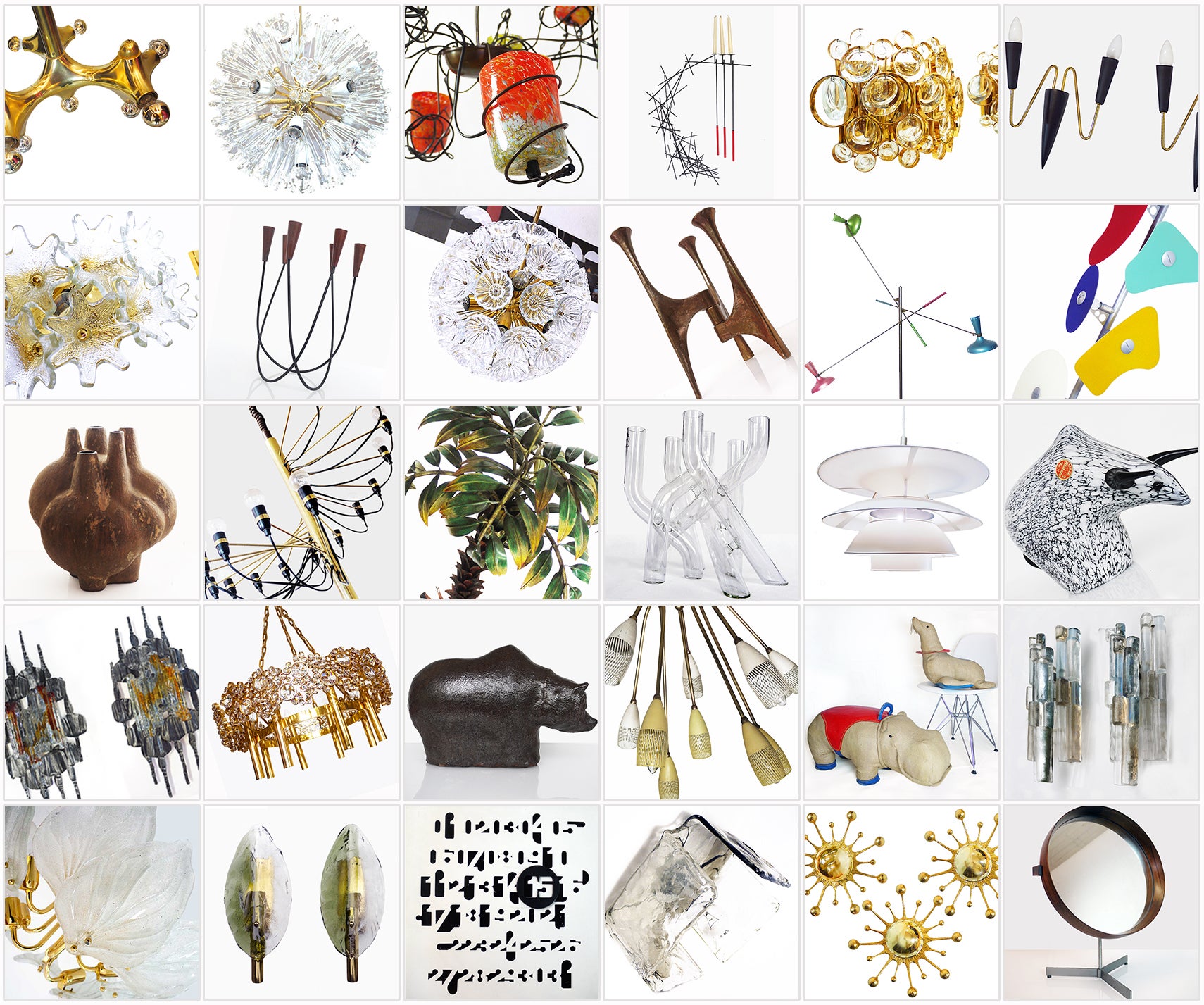
- ShippingRetrieving quote...Shipping from: Niederdorfelden, Germany
- Return Policy
More From This Seller
View AllMid-20th Century Swiss Mid-Century Modern Table Lamps
Brass
Vintage 1960s German Mid-Century Modern Floor Lamps
Glass
Vintage 1960s Italian Mid-Century Modern Table Lamps
Ceramic
Vintage 1960s German Mid-Century Modern Floor Lamps
Metal
Vintage 1960s German Mid-Century Modern Table Lamps
Chrome
Vintage 1960s German Mid-Century Modern Table Lamps
Metal
You May Also Like
Vintage 1960s Swiss Mid-Century Modern Table Lamps
Opaline Glass, Plastic
Vintage 1960s Swiss Mid-Century Modern Table Lamps
Metal
Vintage 1960s Swiss Mid-Century Modern Table Lamps
Metal
Vintage 1960s German Mid-Century Modern Floor Lamps
Metal
Vintage 1960s Swiss Space Age Wall Lights and Sconces
Metal
Vintage 1960s Swiss Space Age Wall Lights and Sconces
Metal
